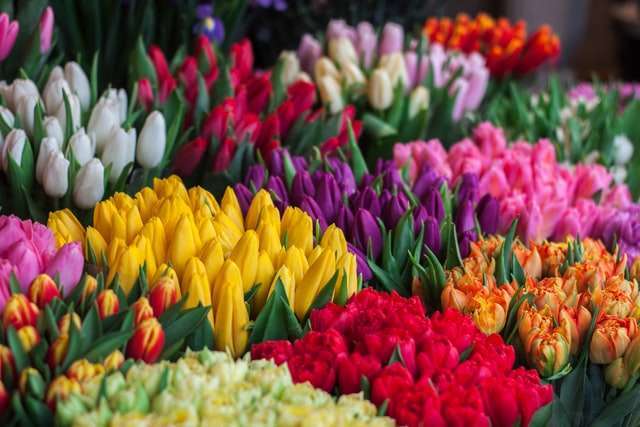K-State horticulture expert shares tips for planning spring-flowering bulbs
MANHATTAN, Kan. — Spring may seem far away, but a Kansas State University horticulture expert said it is time to start thinking about when to plant spring-flowering bulbs.
Ward Upham said late September through October is a great time to plant such bulbs as tulips, crocus and daffodils that will bloom in the spring.
“These plants need to develop roots in the fall and must meet a chilling requirement over the winter in order to bloom in the spring,” Upham said.
When planting spring-flowering bulbs there are a few key factors to consider:
• Choose a planting site that has full sun to partial shade.
• Ideal soil would be a sandy loam, but other soils can be used if amended by adding organic material such as peat moss or compost.
• The pH level of the soil should be between 6.0 and 7.0.
• Bulbs need good aeration as well as good drainage for proper development, Upham said it is best if bulbs are given 12 inches of prepared soil. “If one-third organic material were added, this would require mixing 4 inches of organic material with 8 inches of soil,” he said.
While some planting methods are the same, planting depths depend on the size of the bulbs. According to Upham, tulips and hyacinths are to be set about 6 inches deep whereas daffodils can be set between 6-8 inches deep.
“As a rule of thumb, bulbs are planted 2-3 times as deep as their width. Planting depth is the distance from the bottom of the bulb to the top of the soil,” Upham said.
To make a better display once flowered, make sure to plant in clumps or masses instead of single bulbs, he added.
Planting Trees in the Fall
Fall can also be the perfect time to plant trees, specifically between early September and late October.
“The warm and moist soils normally associated with fall encourage root growth,” Upham said.
Root growth in the fall allows the tree to become established earlier, making it better equipped to withstand the stress of summer.
“Unfortunately, certain trees do not produce significant root growth during the fall and are better planted in the spring,” Upham said. A few examples are beech, birch, redbud and dogwood.
Upham reminded Kansans that fall planted trees require special care. Here are his tips:
• Make sure the soil stays moist but not soggy.
• Remember roots are actively growing.
• Mulch can be helpful in minimizing moisture loss and slowing the cooling of the soil to continue root growth.
Upham and his colleagues in K-State’s Department of Horticulture and Natural Resources produce a weekly Horticulture Newsletter with tips for maintaining home landscapes. The newsletter is available to view online or can be delivered by email each week.
Interested persons can also send their garden- and yard-related questions to Upham at [email protected], or contact your local K-State Research and Extension office.
-30-
FOR PRINT PUBLICATIONS: Links used in this story
K-State Horticulture Newsletter, https://hnr.k-state.edu/extension/info-center/newsletters/index.html
K-State Research and Extension local offices, www.ksre.k-state.edu/about/stateandareamaps.html
K State Research and Extension is a short name for the Kansas State University Agricultural Experiment Station and Cooperative Extension Service, a program designed to generate and distribute useful knowledge for the well being of Kansans. Supported by county, state, federal and private funds, the program has county extension offices, experiment fields, area extension offices and regional research centers statewide. Its headquarters is on the K State campus in Manhattan. For more information, visit www.ksre.ksu.edu. K-State Research and Extension is an equal opportunity provider and employer.
Story by:
Emily Halstead
[email protected]
For more information:
Ward Upham
785-532-6173
[email protected]




